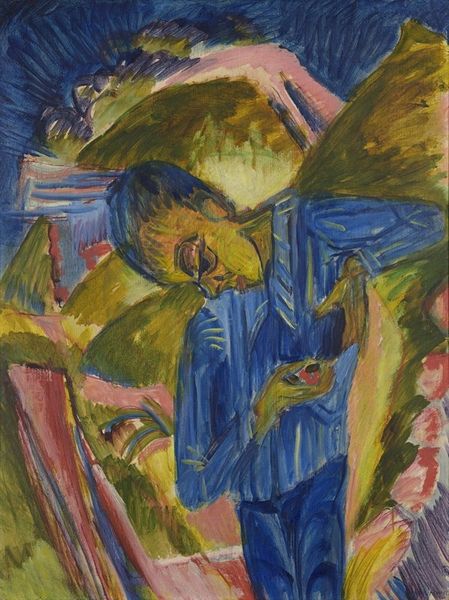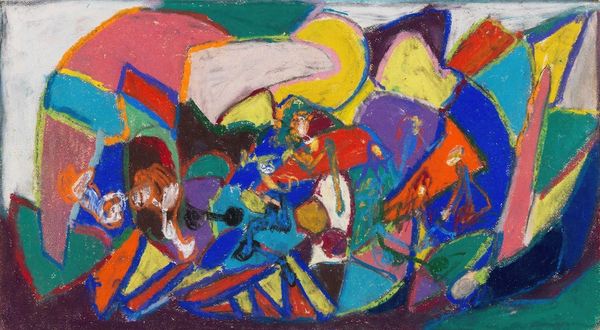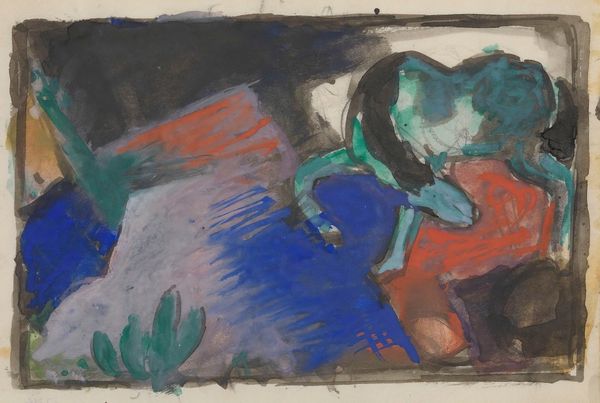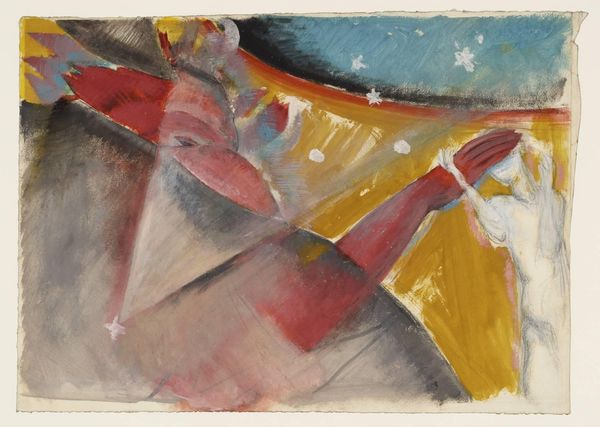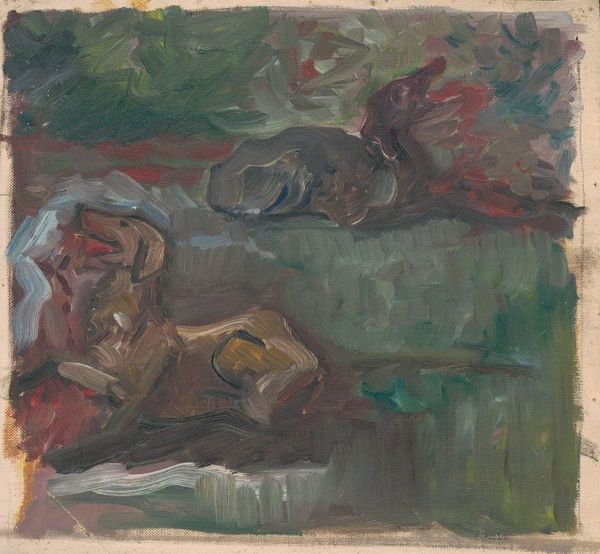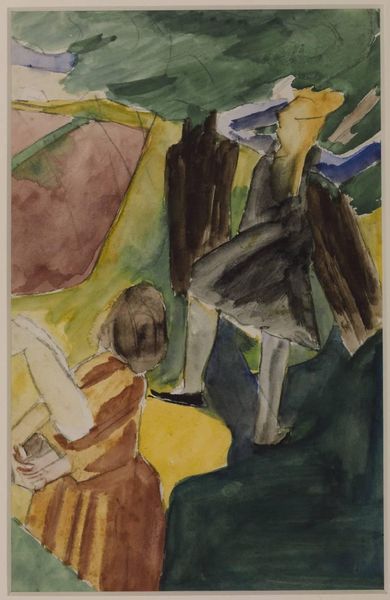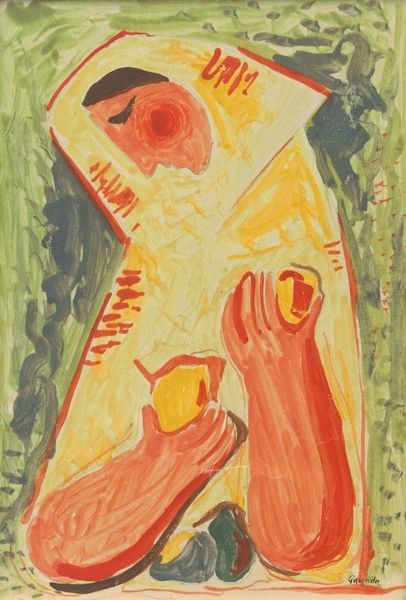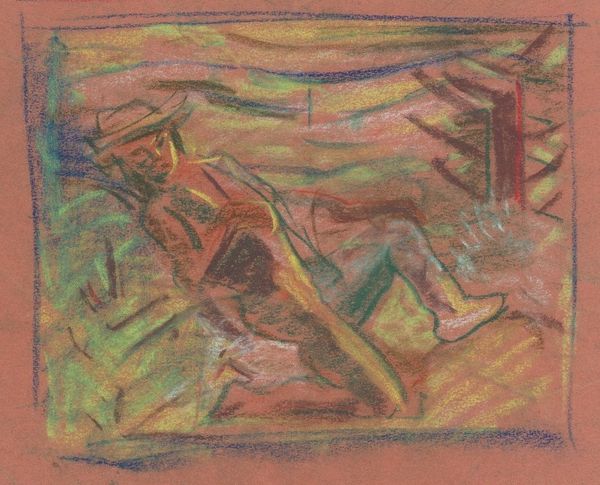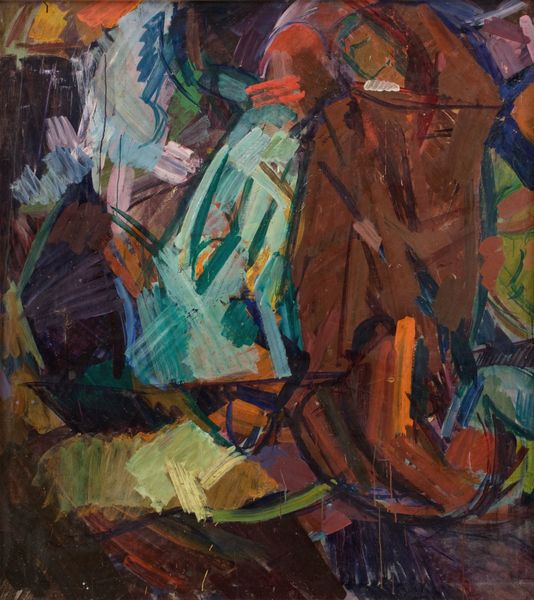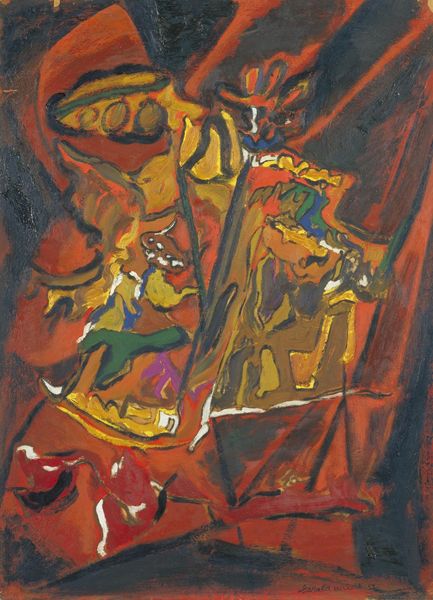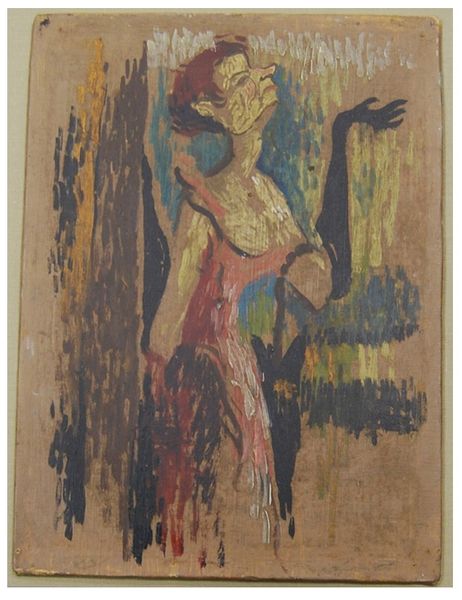
painting, plein-air, oil-paint
#
painting
#
plein-air
#
oil-paint
#
landscape
#
german-expressionism
#
abstract
#
expressionism
#
abstraction
Copyright: Public Domain: Artvee
Curator: Let's talk about "Tiger in the Jungle", painted by Franz Marc in 1912, a piece that stands out for its radical abstraction. What are your immediate impressions? Editor: The overall tonality strikes me. The blend of blues, greens, and yellows suggests something natural, even lush, yet the fractured forms evoke tension. It feels restless, a prelude to… something. Curator: It is restless! This work came just before World War I, a time of intense social and political change. Marc, deeply involved in the German Expressionist group Der Blaue Reiter, was seeking a new visual language. They strived to represent spiritual realities rather than imitate nature, reflecting a yearning for renewal amid societal anxiety. Editor: Right. And look at the compositional structure! Marc employs a complex network of overlapping planes. The traditional foreground and background are collapsed into an all-over design. The effect is a destabilization of visual perspective that mirrors, I think, the precarious state of European society at the time. Curator: Exactly. Traditional representation was seen as inadequate. He adopted abstraction to get to what he felt was a deeper reality. You can also see how avant-garde movements of the early 20th century influenced each other. The impact of Cubism in this work, particularly in its deconstruction of form, cannot be understated. Editor: Definitely. Even if the overt political statements aren’t on display. Color, of course, plays a significant role. The dominance of cool tones subverted by aggressive dashes of red and orange give that tiger some fierce energy, despite the flattening of forms. Curator: He believed colors possessed inherent spiritual qualities, that they could directly affect the viewer’s psyche, bypassing rational thought altogether. That certainly impacted his work, also evident in other symbolic applications of colors. For example, the blue symbolizing spirituality. Editor: It gives new depth to the idea of using plein-air medium to suggest new spiritual realms and realities that resonate with our own perception of change and growth! Curator: I completely agree. "Tiger in the Jungle" reminds us that art doesn't exist in a vacuum; it's a mirror reflecting, sometimes distorting, the complex realities of its time. Editor: And yet, through its form, line, color and material properties, "Tiger in the Jungle" creates a deeply emotive response, even when viewed without the historical context.
Comments
No comments
Be the first to comment and join the conversation on the ultimate creative platform.
